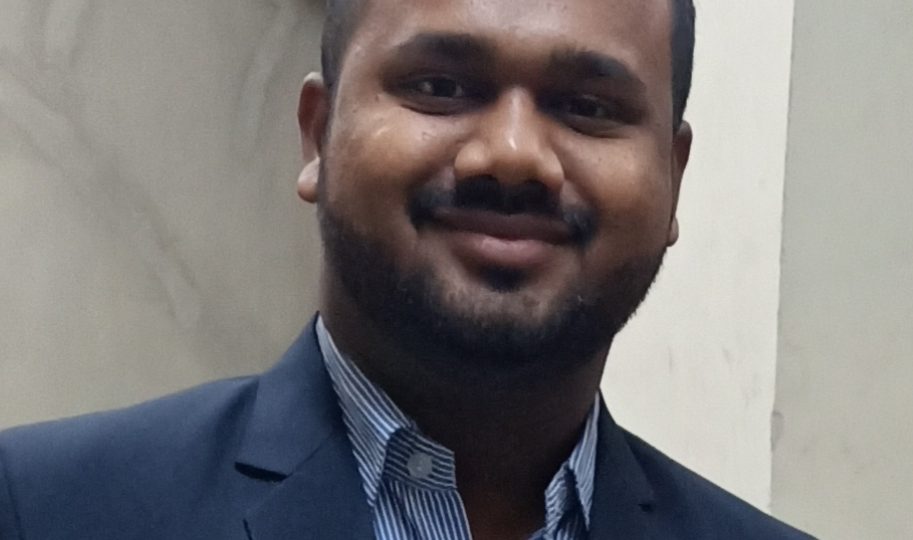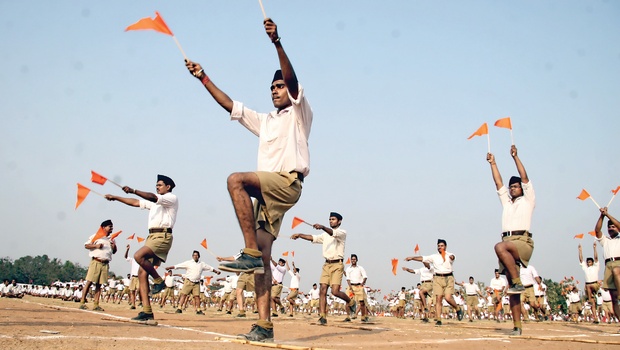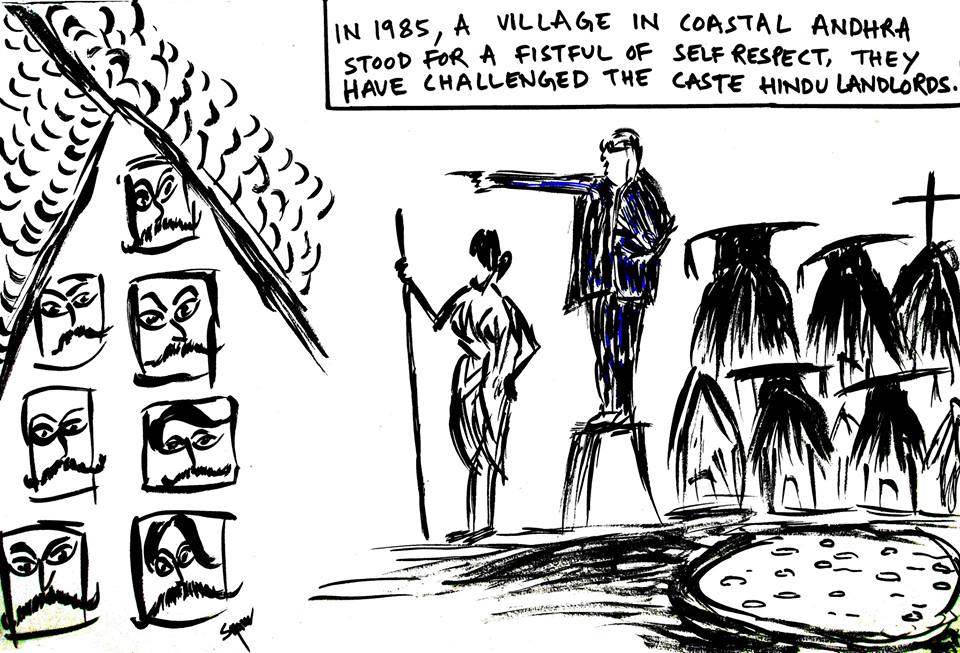Vinay Damodar
The system of government of any country depends on the constitution of that country. The constitution is considered as the supreme law of the country as it broadly defines the nature of power in the country, the nature of the government, the rights and duties of the citizens, the relationship between the center and the states, and other matters.
November 26 is celebrated as Constitution Day across the country. Earlier, this day was also known as National Law Day. Today, 72 years have passed since the adoption of the constitution, and the country has seen many ups and downs during this period. But those ups and downs have been dealt with great determination, and democracy can be seen functioning freely throughout the country. In fact, India has the reputation of being the largest democracy in the world. Of course, the Indian Constitution deserves full credit for this.
If we trace the constitution of India, the Constituent Assembly came into existence on December 9, 1946. 11 sessions of the Constituent Assembly were held. The work of the Constituent Assembly lasted for 165 days. A seven-member Draft Committee was appointed on August 29, 1947 under the leadership of Dr. Babasaheb Ambedkar. The committee worked for a total of 141 days. The draft prepared by the Constitutional Adviser B. N. Rao was considered and discussed by the Draft Committee. Based on the resolutions of various committees, the Constitution Committee submitted the final draft to the Constituent Assembly on 21 February 1948. Finally, on 26th November 1949, the Constituent Assembly gave its final approval. All members were sworn in on the same day. That is, the Indian State Constitution was drafted. Following that, the Constitution was declared accepted and signed by the President of the Constituent Assembly. The constitution took 2 years, 11 months, and 17 days to complete. Dr. Babasaheb Ambedkar drafted the constitution as Chairman of the Drafting Committee. Dr. Babasaheb Ambedkar deserves full credit for this task. Babasaheb is known as the architect of the Constitution because he drafted it.
Although we gained independence on August 15, 1947, the constitution went into effect on January 26, 1950, and the country became a republic. Our constitution is replete with noble values such as humanity, social and economic justice, liberty, and fraternity. November 26 should be observed as ‘Constitution Day’, according to a Maharashtra Government circular dated 24/11/2008. The main goal of celebrating this day is to raise public awareness about the Indian Constitution. To familiarize all citizens with the Constitution, this brochure was distributed on this day to all government, semi-government offices, district councils, panchayat committees, village panchayats, municipalities, municipal corporations, all primary, secondary, higher secondary schools, and all colleges. Since then, Constitution Day has been observed.
Indian citizens should embrace democratic values not only in their political lives, but also in their family, social, economic, and religious lives. We, as Indian citizens, must oppose inequality in all of its forms and take steps to eliminate it. However, this does not appear to be the case today. We regret that we have not achieved universal and strong support for democratic values.
The Constitution have given the oppressed and deprived people of this country the ability to live with human values. All have been granted equal rights, with no distinction made between men and women, rich and poor, Shudra and Savarna. Although traditional exploitation and slavery have ended, capitalism and religious pluralism have found new ways to exploit the common man. Only scientific temper, as mentioned in the Constitution, can protect the common man from exploitation by resolving the pressing and public issues before us. Our country can only become rational and authoritarian by adopting a scientific approach.
The word ‘people’ includes citizens, statutory officers, people’s representatives etc. It is taken as a constant inspiring reminder of the duty and responsibility to foster faith and loyalty to the Constitution and perform the duties as per the provisions of the Constitution. While entering government service, the officers also take an oath on the Constitution. But the majority, however, does not believe in the oath they have taken. In the country, many issues have arisen. It is the core value of rule of law and democracy which are the basic condition for the success of this system. During the celebration of ‘Constitution Day’, activities should be carried out to increase the rule of law. While insisting on rights and dignity, citizens should also insist on their duties. Ask what you can do for India. We must work in accordance with India’s ambition.
The Indian constitution, one of the most admired in the world, was enacted after ‘ransacking’ all known constitutions at the time. This constitution that we enacted has withstood the test of time. Despite borrowing provisions from other constitutions, the Indian constitution has several distinguishing features that set it apart from constitutions of other countries.
Some of its salient features are discussed below:
Lengthiest written constitution
- Constitutions can be classified as written constitutions, such as that of the United States of America, or unwritten constitutions such as that of the UK.
- The constitution of India is a written constitution which happens to be the lengthiest written constitution in the world.
- It is a comprehensive, elaborate and detailed document
- The factors that have contributed to this document are: geographical factors (vastness of country and diversity), historical factors (influence of GoI Act, 1935), single constitution for both centre and the states and dominance of legal luminaries.
Drawn from various sources
- It has borrowed most of its provisions from the constitutions of various other countries as well as from the Government of India act, 1935. Example: structural part from GoI Act, 1935, independence of judiciary from USA, Fundamental Rights from USA etc
- Though it is borrowed, the Indian constitution-makers made sure the borrowed features were made suitable to Indian conditions. Example: though we borrowed cabinet form of governance from UK, the cabinet is not all-supreme as in the case of UK.
Preamble of the constitution
- The Preamble consists of the ideals, objectives and basic principles of the Constitution.
- The salient features of the Constitution have developed directly and indirectly from these objectives which flow from the Preamble.
- It asserts India to be a Sovereign Socialist Secular Democratic Republic and a welfare state committed to secure justice, liberty and equality for the people and for promoting fraternity, dignity of the individual, and unity and integrity of the nation.
- The Preamble is the nature of Indian state and the objectives it is committed to secure for the people.
Democratic system
- The authority of the government rests upon the sovereignty of the people. The people enjoy equal political rights.
- Free, fair and regular elections are held for electing governments.
India is a Republic
- The Preamble declares India to be a Republic.
- India is not ruled by a monarch or a nominated head of state. India has an elected head of state (President of India) who wields power for a fixed term of 5 years.
- After every 5 years, the people of India indirectly elect their President.
Union of States
- Article I of the Constitution declares, that “India that is Bharat is a Union of States.”
Fundamental Rights and duties:
- The Constitution of India grants and guarantees Fundamental Rights to its citizens.
- The constitution of India confirms the basic principle that every individual is permitted to enjoy certain basic rights and part III of the Constitution deals with those rights which are known as fundamental rights.
- The Six fundamental rights include- Right to Equality; Right to Freedom; Right Against Exploitation; Right to Freedom of Religion; Cultural and Educational Rights and Right to Constitutional Remedies (Art. 32).
- The fundamental rights are justiciable and are not absolute. Reasonable constraints can be imposed keeping in view the security-requirements of the state.
- A new part IV (A) after the Directive Principles of State Policy was added to the constitution through the 42nd Amendment, 1976 enlisting fundamental duties.
Directive Principles of State Policy:
- A unique aspect of the Constitution is that it comprises of a chapter on the Directive Principles of State Policy.
- These principles are in the nature of directives to the government to implement them to maintain social and economic democracy in the country.
Parliamentary System:
- The Constituent Assembly decided to espouse a Parliamentary form of government, both for the Centre and the states.
- In the Indian parliamentary system, distinction is made between nominal and real executive heads.
- The Council of Ministers is responsible before the Lok Sabha, the lower house of union parliament. There are close relations between the executive and the legislature.
Federal structure of government:
- A federal state is a state where a country is divided into smaller regions and the government is functioning at two levels.
- The Indian Constitution has envisaged a federal structure for India considering the geographical vastness and the diversity of languages, regions, religions, castes, etc.
- Written Constitution, Supremacy of the Constitution, Division of Powers between the Union and States, Bicameral Legislature, Independent Judiciary, etc. are the features of the Indian federation.
- Scholars describe India as a ‘Quasi-Federation’ (K.C. Wheare) or as ‘a federation with a unitary bias, or even as ‘a Unitarian federation.’
Universal adult franchise
- All men and women enjoy an equal right to vote. Each adult man and woman above the age of 18 years has the right to vote.
- All registered voters get the opportunity to vote in elections.
Single Integrated State with Single Citizenship:
- India is a single Independent and Sovereign integrated state.
- All citizens enjoy a common uniform citizenship.
- They are entitled to equal rights and freedoms, and equal protection of the state.
Integrated Judicial system
- The Constitution provides for a single integrated judicial system common for the Union and the States.
- The Supreme Court of India works at the apex level, High Courts at the state level and other courts work under the High Courts.
Independent Judiciary
- It is necessary to secure the philosophical foundations of the rule of law and democracy.
- Firstly, the Constitution makers created a separate Judiciary independent of Legislature and Executive.
- Secondly, the Constitution has ensured complete independence of Judiciary in the matters of administration and finances.
Amending the Constitution of India:
- Amending the Constitution of India is the procedure of making modifications to the nation’s fundamental law or supreme law.
- The procedure of amendment in the constitution is laid down in Part XX (Article 368) of the Constitution of India.
- This procedure guarantees the sanctity of the Constitution of India and keeps a check on uninformed power of the Parliament of India.
Judicial Review:
- The judiciary has a significant position in Indian Constitution and it is also made independent of the legislature and the executive.
- The Supreme Court of India stands at the peak of single integrated judicial system.
- It operates as defender of fundamental rights of Indian citizens and a guardian of the Constitution.
Basic Structure doctrine:
- The basic structure doctrine is an Indian judicial norm that the Constitution of India has certain basic features that cannot be changed or destroyed through amendments by the parliament.
- The basic features of the Constitution have not been openly defined by the Judiciary.
- At least, 20 features have been described as “basic” or “essential” by the Courts in numerous cases, and have been incorporated in the basic structure.
- In Indira Gandhi v. Raj Narain case and also in the Minerva Mills case, it was witnessed that the claim of any particular feature of the Constitution to be a “basic” feature would be determined by the Court in each case that comes before it.
Secularism
- In no other country of the world do so many religions co-exist as in India. In view of such diversity the Constitution guarantees complete freedom of religion to all.
- The citizens of our country are free to follow any religion and they enjoy equal rights without any distinction of caste, creed, religion or sex.
- The State does not discriminate against anyone on the ground of his religion, nor can the State compel anybody to pay taxes for the support of any particular religion.
- Everybody is equally entitled to freedom of conscience and the right to freely profess, practice and propagate religion.
- The Constitution regards religion as a private affair of individuals and prohibits the State from interfering in it. The Constitution also grants various cultural rights to minorities.
Independent bodies
- The Constitution has set up various independent bodies and vested them with powers to ensure the constitutional provisions. Ex: Election Commission, CAG, Finance Commission
- These institutions have been provided with security of tenure, fixed service conditions etc to ensure that they are not susceptible to the whims of either the legislature or the executive.
Emergency provisions
- Indian constitution contains elaborate provisions to deal with those challenges that pose a threat to the country’s security and unity.
Three-tier government
- Through 73rd and 74th amendment act, we have rural and urban local bodies as an additional constitutional tier of the government structure.
“How long shall we continue to live this life of contradictions? How long shall we continue to deny equality in our social and economic life? If we continue to deny it for long, we will do so only by putting our political democracy in peril. We must remove this contradiction at the earliest possible moment or else those who suffer from inequality will blow up the structure of political democracy which this Assembly has so laboriously built up.”
These are the words of Dr. Babasaheb Ambedkar which are very essential in the contemporary times where there are numerous attacks on the Indian Constitution.
~
References
https://www.insightsonindia.com/polity/indian-constitution/salient-features-of-indian-constitution/
~~~
Vinay Damodar is an Ambedkarite research scholar currently pursuing PhD in Inclusive Development and Social Justice, from Centre for Study of Social Exclusion and Inclusive Policies, Tata Institute of Social Sciences, Mumbai. His interests lie in the intersections of Caste, Anti-caste movement, the Politics of Ambedkarite groups, Dr. Ambedkar’s thoughts and vision, etc. He hails from Bhim Nagar, Akola, Maharashtra.










